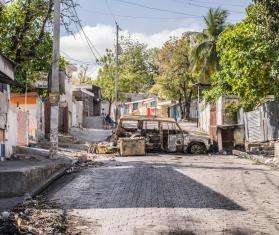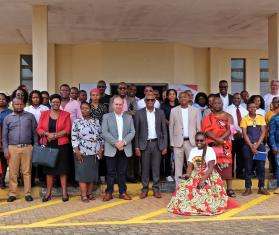The intensity of attacks in besieged areas near Damascus and Homs has increased dramatically once more, leading to significant increases in mass casualty influxes.
Just today, Friday, multiple airstrikes again hit East Ghouta, an area of besieged towns near Damascus. Medics in the area are reporting many casualties, including women and children, but the tally of today’s war-wounded and war-dead is not yet complete.
It's part of a very disturbing trend. From November 17 onwards, MSF-supported facilities in East Ghouta and in Al Waer, a besieged community near Homs, have been reporting very high numbers of war-wounded and dead. Hospitals in the East Ghouta area reported 261 wounded and 30 dead over that time frame, while the hospital in Al Waer reported that 100 were wounded and 13 were killed on just one day of bombing and shelling.
During this same period, medical workers and facilities have themselves been among the casualties. One paramedic in East Ghouta was severely wounded during an airstrike. An anesthesia technician was wounded by sniper fire in Zabadani. Three ambulances were hit and destroyed. And one MSF-supported hospital in the East Ghouta area was damaged when a bomb hit the building next door, putting the Intensive Care Unit out of action at a time when the service was desperately needed for wounded casualties.
Schools, hospitals, and homes: A Doctor Reports on Latest Attacks in East Ghouta
Schools and residential areas have been hit as well, suggesting at least some of these attacks involved indiscriminate bombing and shelling of civilian areas. While the full data breakdown of the ages and gender of those killed or wounded in Al Waer is not yet available, in East Ghouta, 43 percent of the wounded and 60 percent of the dead have been children under 15 years old and women.
“While we continue to raise our voice about the catastrophic situation in east Aleppo, alarm bells are again ringing loud in several other areas of intense conflict,” says Anja Wolz, Medical Manager of MSF medical support programs in Syria. “Just yesterday, two schools in East Ghouta were hit in aerial attacks as the students were leaving at the end of the day. All but one of the wounded were women and children, with 16 being treated at an MSF-supported facility and others referred to other facilities in the area by ambulance. And last Sunday, a rescue team trying to dig victims out of bomb rubble in Al Waer found themselves under sustained mortar shelling, resulting in nine of the rescue workers being wounded and requiring treatment themselves.
“Yet again, we are horrified at the numbers of women and children among the wounded and dead coming to MSF-supported medical facilities,” continues Wolz. “We should all be very concerned indeed about the fate of civilians trapped in these areas of intense conflict. If the bombing and fighting cannot be stopped, at the very least, extreme care must be taken by the warring parties to avoid hitting the medics and ambulance teams going about their life-saving work.”
MSF-supported medical staff have reported that many residents in these areas are huddling in basements because they fear that bombing and shelling will hit residential areas, as has happened many times before. Ambulances are positioned around the areas rather than in one centralized depot due to concerns that they could then all be targeted and destroyed by a single strike. Some hospitals have also had to shut down regular medical activities as the staff are all needed permanently in the Emergency Room and surgical departments.
The levels of supplies are running low in some of these hospitals. MSF has received and responded to three emergency requests for IV fluids, antibiotics, and analgesics. In addition, our team is currently preparing for 19 other requests for resupplying the facilities in East Ghouta.
MSF runs six medical facilities across northern Syria, supports more than 70 health centers and hospitals across the country with funding and supplies, and provides ad hoc emergency medical donations to a network of some 80 additional medical facilities.



